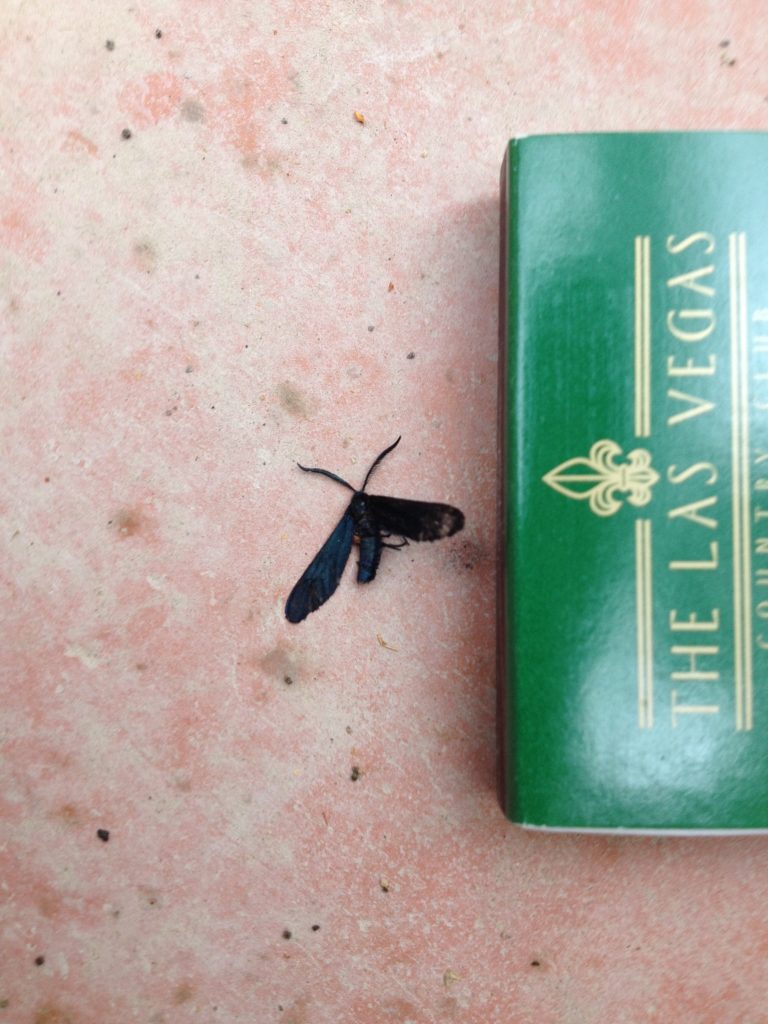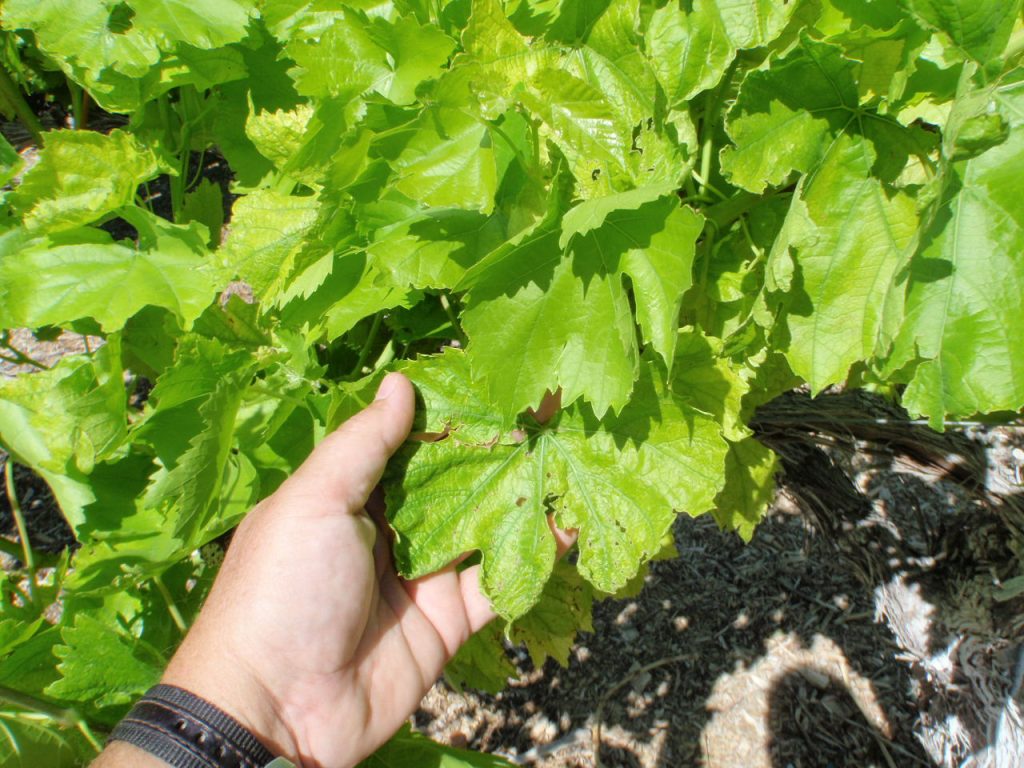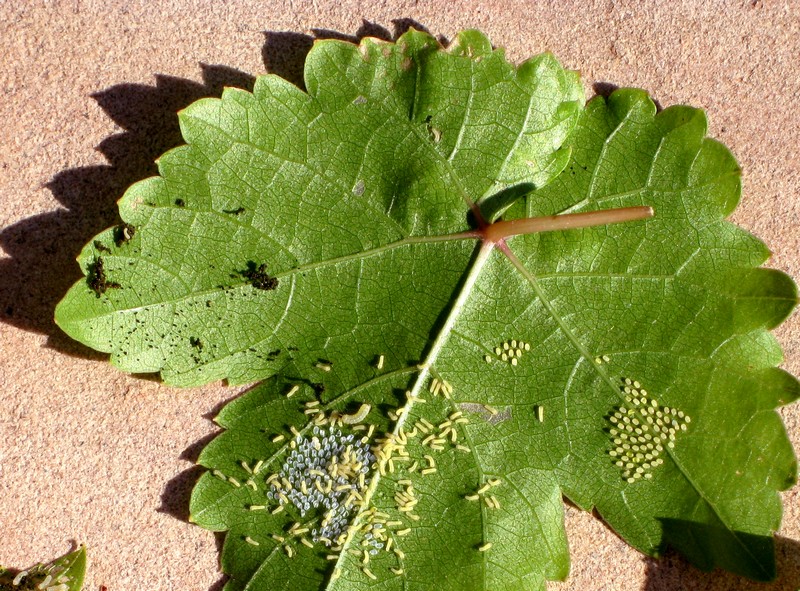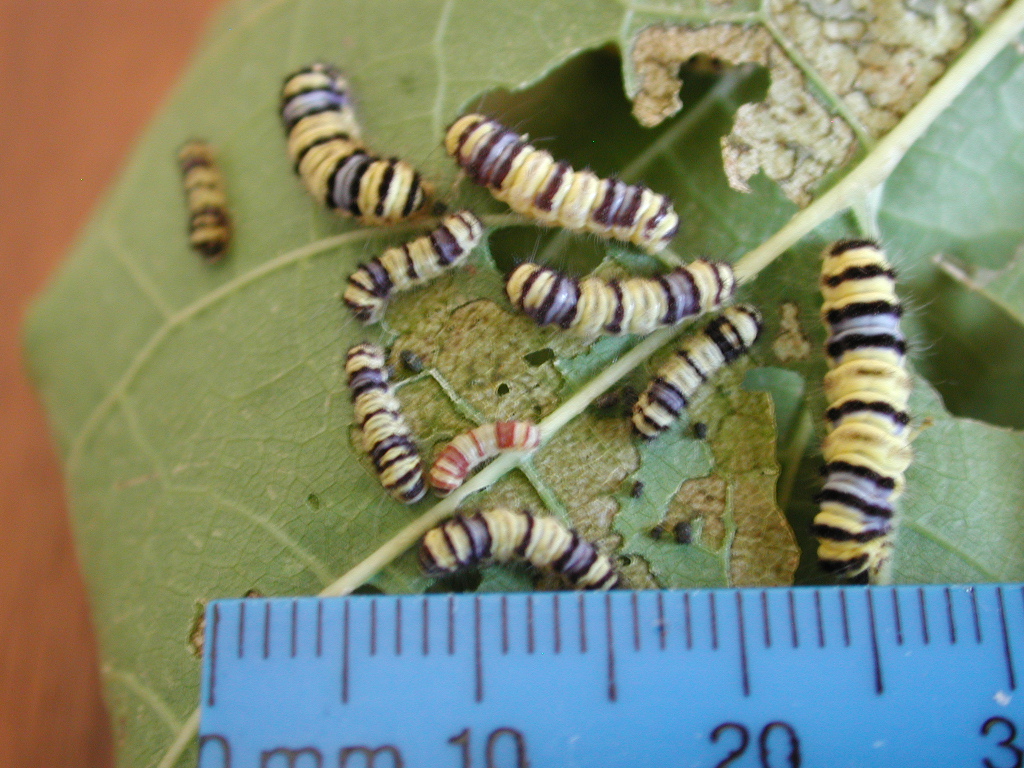Q. I have some pest problems on my grapes that I think is grape leaf skeletonizer, but it made holes in the leaves. Is this the same skeletonizer or do I have a new problem?
A. The grape leaf skeletonizer is an adult three quarter to one inch or so moth which lays eggs in clusters and is a problem with grapes every year. The short-lived adult moth, along with the small eggs, don’t do any damage. It’s the larva which burn like matchheads if they fall on your skin. It’s these larvae that “skeletonize” grape leaves that causes all the damage. These young black and yellow larvae glide across grape leaves and turn these leaves into “skeletons” three to five times every year. Skeletonizing grape leaves is what gets them bigger.

This can start from April or May of every year in Las Vegas depending on their populations. If you don’t get some control of them early with sprays of spinosad or Bt, their populations may continue to get larger and larger.

There is another insect problem with grapes. That is the grape flea beetle which “chews” holes in the leaves. Most of the time it can be confused with “skeletonizers”. This is because they occur at the same time, but don’t create the same type of damage. Flea beetles chew holes in leaves. They don’t skeletonize leaves. And, unlike ‘skeletonizers”, they cause grape leaf damage, at the most, twice year. Oftentimes, just once in the spring.

Eggs from grape leaf skeletonizer
With “skeletonizers” the preferred spray is spinosad. You can use Bt (Bacillus thuringiensis) sprays and most of the time they will work. I like spinosad sprays because they will get leafhoppers as well which Bt does not.
For grape flea beetles any insecticide works. But spraying them with an insecticide isn’t always the answer. Usually, unless the infestation is heavy, just waiting three weeks is enough. The population of grape flea beetles will pass without spraying. I oftentimes will just wait for three weeks but not for the skeletonizers. You must spray and spray early. Don’t forget to spray the undersides of leaves early.
